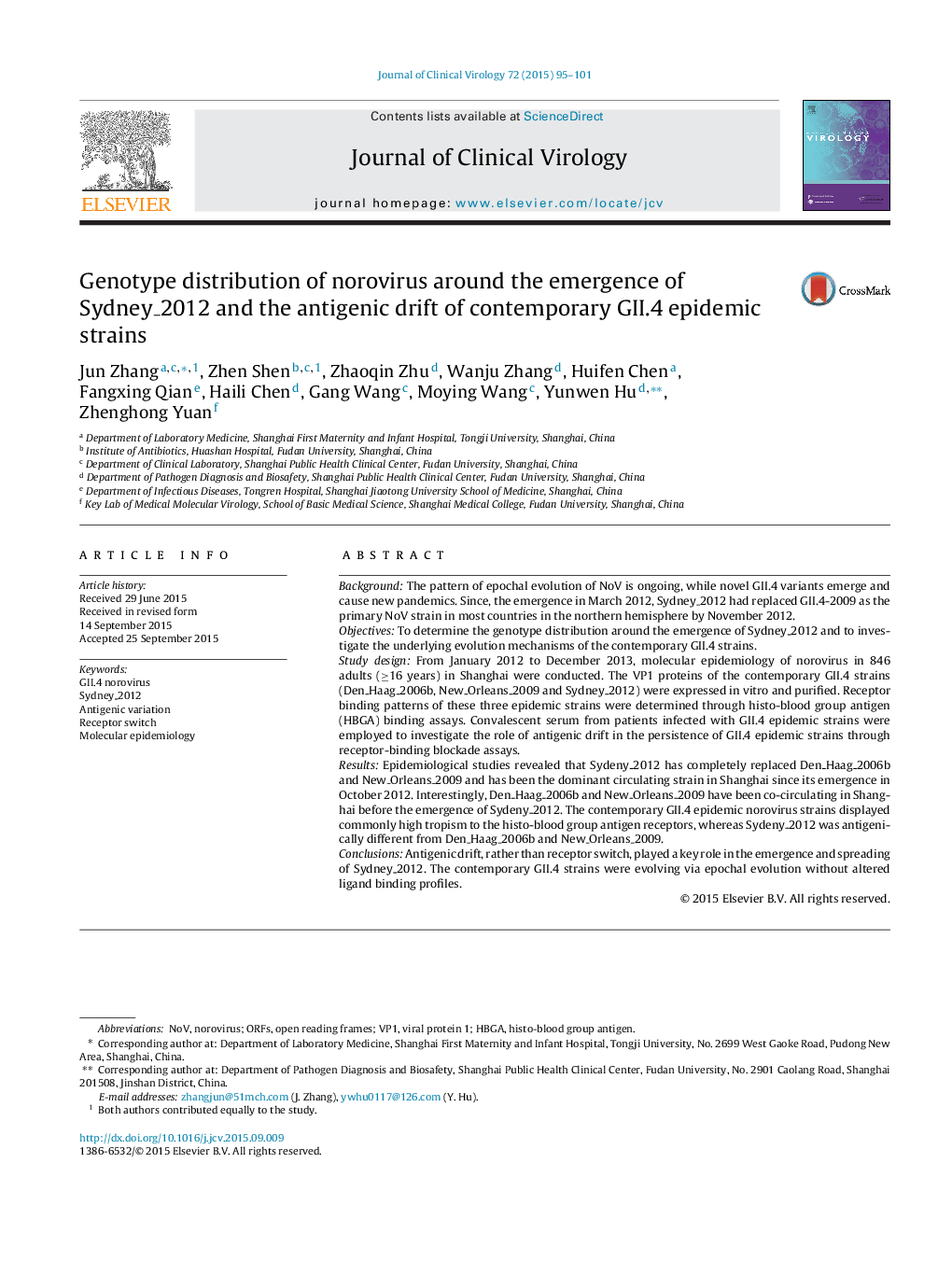| کد مقاله | کد نشریه | سال انتشار | مقاله انگلیسی | نسخه تمام متن |
|---|---|---|---|---|
| 3368772 | 1592354 | 2015 | 7 صفحه PDF | دانلود رایگان |

• Sydeny_2012 has completely replaced Den_Haag_2006b and New_Orleans_2009 since its emergence in Shanghai in October 2012.
• The contemporary GII.4 epidemic norovirus strains displayed commonly high tropism to the histo-blood group antigen receptors.
• Sydeny_2012 was antigenically different from Den_Haag_2006b and New_Orleans_2009.
• The contemporary GII.4 strains were evolving via epochal evolution without altered ligand binding profiles.
BackgroundThe pattern of epochal evolution of NoV is ongoing, while novel GII.4 variants emerge and cause new pandemics. Since, the emergence in March 2012, Sydney_2012 had replaced GII.4-2009 as the primary NoV strain in most countries in the northern hemisphere by November 2012.ObjectivesTo determine the genotype distribution around the emergence of Sydney_2012 and to investigate the underlying evolution mechanisms of the contemporary GII.4 strains.Study designFrom January 2012 to December 2013, molecular epidemiology of norovirus in 846 adults (≥16 years) in Shanghai were conducted. The VP1 proteins of the contemporary GII.4 strains (Den_Haag_2006b, New_Orleans_2009 and Sydney_2012) were expressed in vitro and purified. Receptor binding patterns of these three epidemic strains were determined through histo-blood group antigen (HBGA) binding assays. Convalescent serum from patients infected with GII.4 epidemic strains were employed to investigate the role of antigenic drift in the persistence of GII.4 epidemic strains through receptor-binding blockade assays.ResultsEpidemiological studies revealed that Sydeny_2012 has completely replaced Den_Haag_2006b and New_Orleans_2009 and has been the dominant circulating strain in Shanghai since its emergence in October 2012. Interestingly, Den_Haag_2006b and New_Orleans_2009 have been co-circulating in Shanghai before the emergence of Sydeny_2012. The contemporary GII.4 epidemic norovirus strains displayed commonly high tropism to the histo-blood group antigen receptors, whereas Sydeny_2012 was antigenically different from Den_Haag_2006b and New_Orleans_2009.ConclusionsAntigenic drift, rather than receptor switch, played a key role in the emergence and spreading of Sydney_2012. The contemporary GII.4 strains were evolving via epochal evolution without altered ligand binding profiles.
Journal: Journal of Clinical Virology - Volume 72, November 2015, Pages 95–101